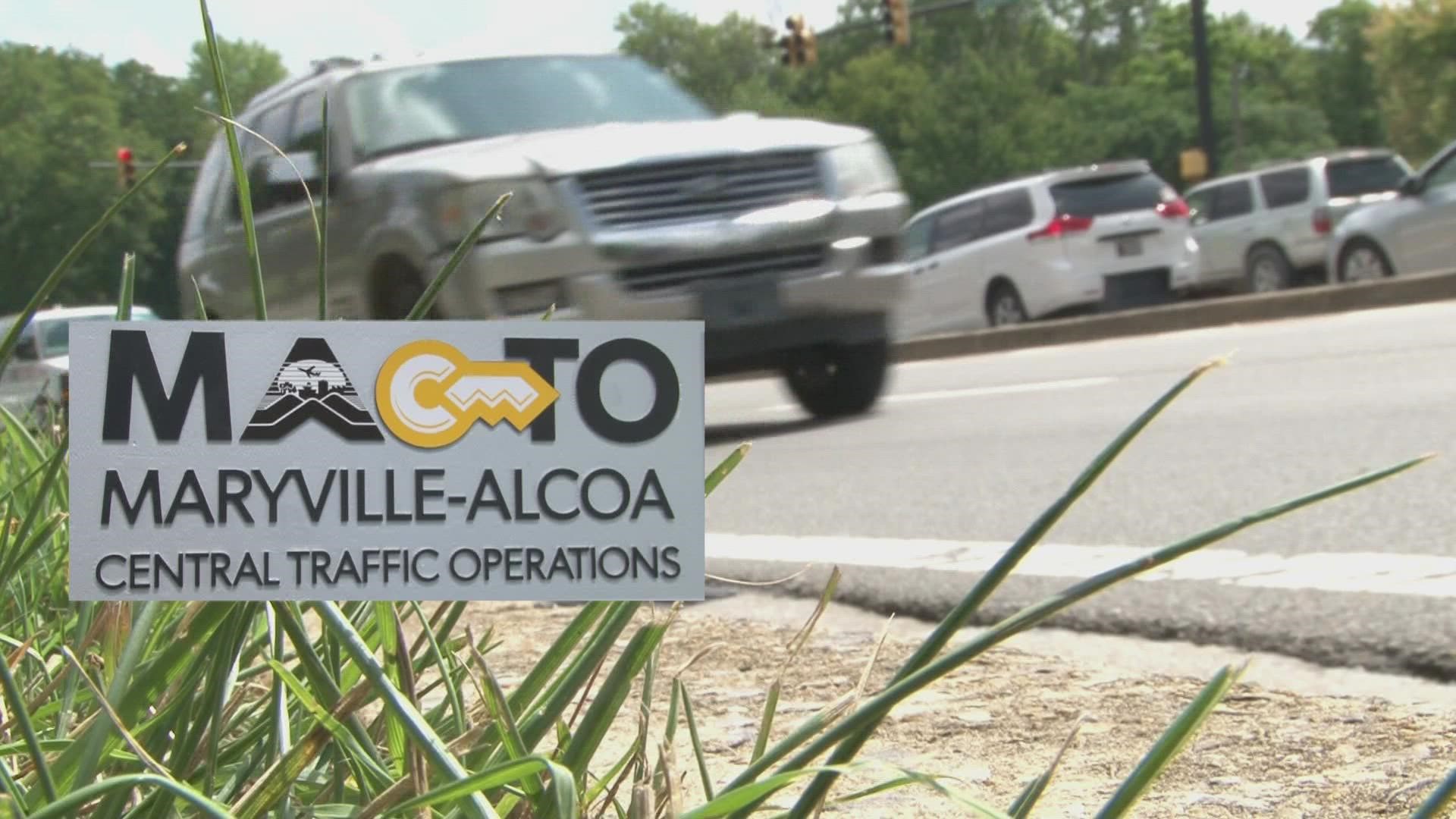MARYVILLE, Tenn. — The Maryville-Alcoa Central Traffic Operations tracks how long drivers need to wait at the busiest intersections in the cities, gathering data about how they can improve the city's roads.
Traffic Engineer Jason Chai studies the intersections and runs simulations based on real data, to ease congestion.
"I can diagnose problems," Chai said. "And make any field changes as if I'm in the field, just from my desk."
On a recent pilot project, Chai said the engineers were able to save 20 seconds off the average commute.
"Over the course of a year, it shaves a lot of time off and gives that back to you," said Kevin Stoltenberg, the Maryville City Engineer.
The cities' goal is to reduce the amount of time people are sitting and waiting at intersections, their cars idling.
"It's wasted energy, it sure is," said Brian Boone, the Director of Engineering for the City of Maryville.
Blount County has a higher concentration of PM 2.5 in the air than EPA standards. PM 2.5 is a kind of air pollutant comes from combustion, including from the exhaust in cars.
"One of the ways we can improve air quality is by reducing the time that vehicles are stopped at an intersection," Stoltenberg said.
The two cities set up the program using a federal grant, aimed at lowering the emissions in a given area.
"Anytime you've got a car that's moving and doesn't have to stop and start and stop and start in cycle," Boone said. "You're going to definitely reduce the amount of emissions that are produced."
Boone said he hopes the program will lower the PM 2.5 concentration below the EPA standards.
"I just want to get to a place where we are able to adapt to the traffic swings that we see with things like COVID," Stoltenberg said. "We can make changes rapidly when we need to."

